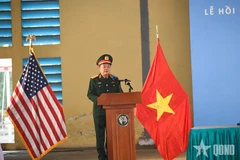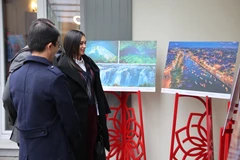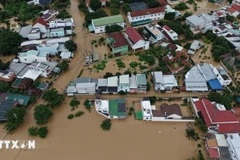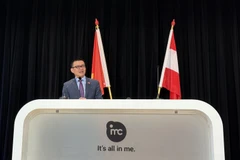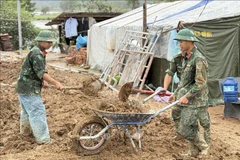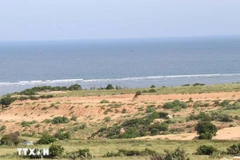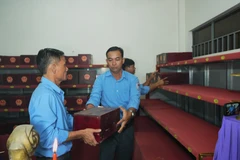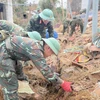They were portable and saved people time travelling tolandfills to dump waste, said Phan Tien Dung, chairman of the People'sCommittee of Phu Luu commune, where the burner was invented.
"Frustrated by the fact that villagers have been throwing nylon bags,bottles and other solid waste away on the streets, but at the same timecomplaining about environmental pollution, the commune's administrationestablished the Phu Luu Commune Environmental Co-operative, whichcollects rubbish and charges fees," Dung said.
However, even with the waste collectors, the situation didn't change much.
"People still kept throwing rubbish away wherever they foundconvenient, especially into ponds and low-lying areas," he said.
After several awareness campaigns failed to inspire people to keep theenvironment clean, the commune decided it would stop just talking andtake action, Dung said.
"We decided to join hands with theprovincial Department of Natural Resources and Environment's Departmentof Environmental Protection to select an area in our commune todemonstrate our model for cleaning up the environment and also engaginglocal civil society," he said.
"We heard there was a new modelof solid waste burner in Nam Dan district's Nam Kim commune in theneighbouring province of Nghe An. We visited the place and found outthat it was a brick-built burner."
However, many thought thatburner was out of the question financially, especially if they weregoing to have to build one for every home.
"While everyone wasat a loss what to do next, Le Tu Khuong, chairman of Phu Luu commune'sEnvironmental Co-operative, came up with the idea of using cement androck to cast a cylindrical burner, which would be cheaper and alsoconvenient for villagers if they want to roll it around," Dung said.
The burner Khuong designed is 1.1m high and 30cm in diameter. A steelnet is placed on the bottom, and a small square window on the side isjust big enough to fit in fire-igniting material. When waste is burned,trash falls down through the net. Each burner costs 350,000 VND to400,000 VND (17 USD to 20 USD).
Impressed by the new burner,the Department of Environmental Protection decided to set aside 100million VND (4,700 USD) to promote its use. The commune contributed 30million VND (1,500 USD) to produce about 200 for households in Thanh MyVillage, which was chosen as a pilot site for the project, Dung said.
Phan Thi Chau, a Thanh My village resident, said that when theystarted using the burners, she and her fellow villagers stopped leavingwaste on the roadside and started throwing it in the burners instead.
Dung said he hopes to collect positive reflections on burner use –like Chau's – for a meeting next year on the burners' performancesduring their first year. He said that if the pilot burner project wasproven effective, his commune would need more funding to finance theiruse in the rest of the commune.-VNA


